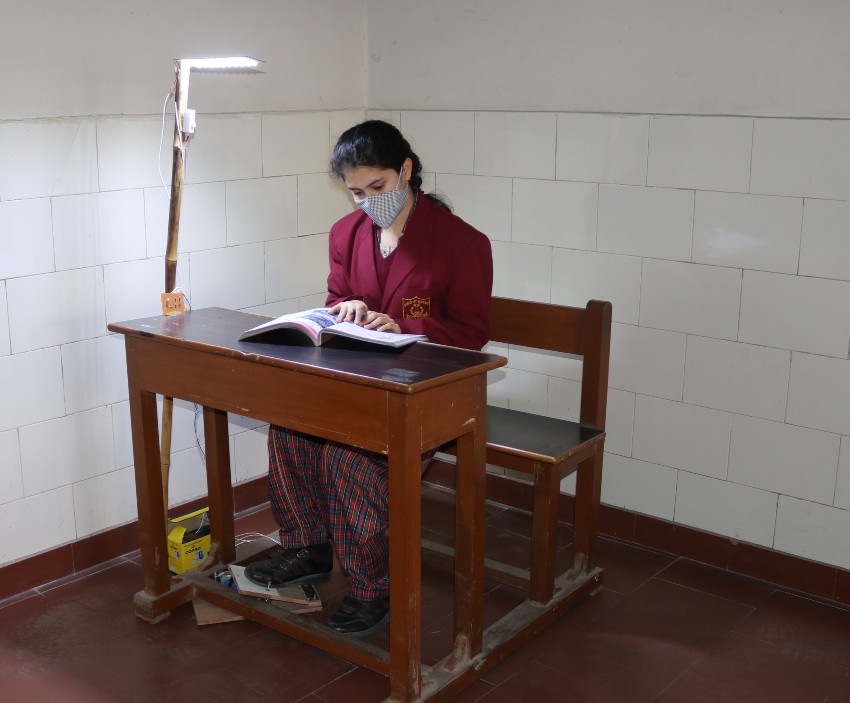With an aim to solve the problem of lack of electricity in many Indian homes 22-year-old Ashutosh Vashishta has innovated a table that generates electricity. He is a final-year student of the National Institute of Design, Haryana, and studies Industrial & UX Design.
“The idea for designing this table came to me after regular visits to my maternal grandparents’ village in Uttar Pradesh. These areas had no electricity connection and people would struggle to finish their household chores or study after sunset,” says Ashutosh.
This problem is not limited to his grandparents’ village. In fact, around 23 million homes in India do not have access to electricity. This means that after sunset, students living in these areas cannot study, or have to use a candle or lamp to do so.
To tackle this problem, Ashutosh designed the 3D model in January 2019. This idea went viral on social media, and this year, he finished a working prototype of the table.

Simple yet brilliant
Ashutosh says has been interested in design and aesthetics since his childhood. Whenever he was faced with complicated processes he would think of user-friendly solutions through the power of design.
That is exactly what helped him design Ujala (meaning light in Hindi), the self-sustaining study table.
“Once the 3D design went viral on social media, one of my professors asked me to design a proof of concept. However, before I could begin any work, the lockdown was announced and I could not procure the materials required,” says Ashutosh.
In June 2019, he began designing the prototype with help from a close friend who is a mechanical engineering student. He spent Rs 1,500 to design the electricity-generating parts.

“The system works on the simple principle of electromagnetism. On creating a continuous movement, electricity is generated, stored in a battery, and used to power a led lamp,” says Ashutosh, adding that his friend helped him with engineering the electrical boards.
It took him two days to design a seesaw-like pedal from wood, which would be placed under the study table. This is connected to a battery that powers a LED light placed on a bamboo stick.
“I chose a bamboo stick to support the light, because it is a good conductor of heat and electricity. Moreover, I wanted to use locally available resources and support rural artisans,” says Ashutosh.
To test his system, he approached DAV Public School, Delhi where he graduated from. Once the school agreed to his request, he was provided with a study table to fit his system.
“The system worked. The rhythmic movement of pedalling, not only improves a student’s focus but also provides light to study. One minute of pedalling, amounted to 10-15 minutes of lighting,” says Ashutosh.
For the future
While the system was tested on a single table from a modern school, in rural areas there may not be tables. Students gather in a commonplace, sit on the floor and practise community learning.
“For this, I have designed a 3D model of a circular table. It will be made by placing each table at an 18-degree angle from the next. Each will have its pedal and LED light. This also creates ample space in the centre for the teacher to move around and teach the class. However, to bring this design to life, I will require external funding as I have to design the tables too,” says Ashutosh.
If you wish to help Ashutosh or know more about his work, you can reach out to him here.
No comments:
Post a Comment